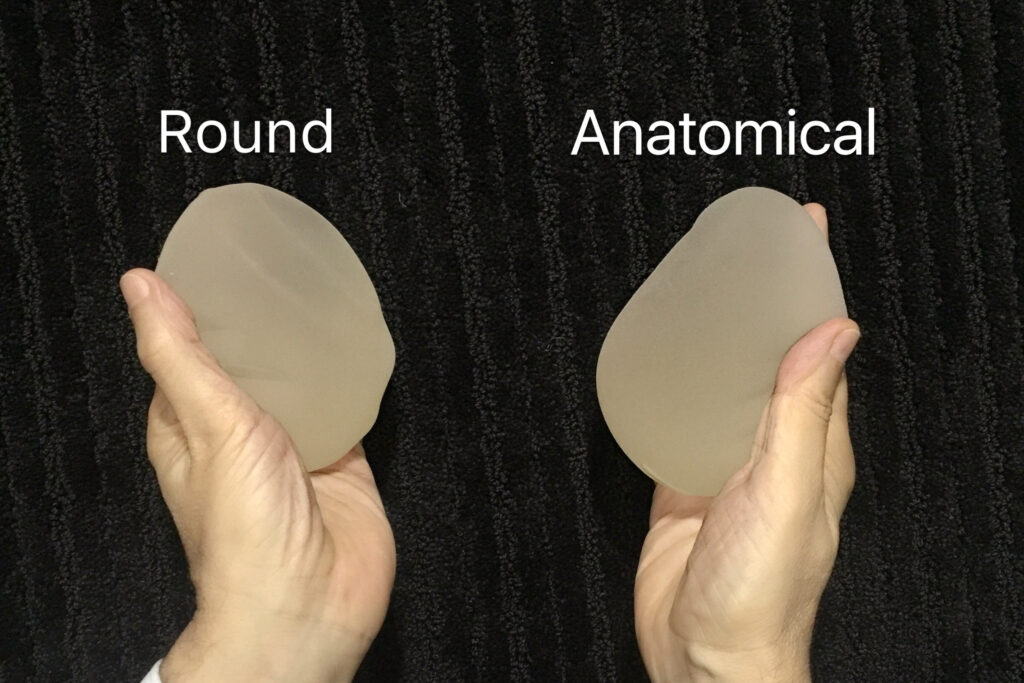Before we explore the possible revision surgeries for breast implant rippling, I want to explain what it is and the reasons behind it happening.
WHAT IS BREAST IMPLANT RIPPLING
Breast implant rippling usually refers to the folds and wrinkles on the implant that is visible on the skin. This happens for women who have had breast reconstruction with saline or silicone breast implants and it usually develops on the outer perimeter (side, bottom, near cleavage) of the reconstructed breasts. It is also especially likely to be visible in very thin women or when leaning forward.

WHAT CAUSES BREAST IMPLANT RIPPLING
It is not uncommon for the breast implants to ripple but it is also not always visible on the skin. Rippling is actually more common for saline-filled breast implants as compared to saline implants. And to be totally honest, silicone gel breast implants can also ripple, but it is much less likely.
Even though there are many reasons why breast implants ripple, these are the most common:
- Poor tissue coverage of the implants: This usually happens for sub-glandular placement of the breast implants. With such placement, sometimes, there is insufficient soft tissue to cover the breast implant, and when the implants ripple, it is more likely to be visible over the skin.
- Scar capsule too loose: Sometimes, the scar capsule that forms naturally around the inserted breast implant might be larger than the implant itself, causing the implant to be drooping inside the scar capsule. When this happens, waves will be formed on the implant, which might result in visible rippling.
- Underfilled/Overfilled saline breast implants: This only applies to saline-filled implants as all silicone implants are prefilled. When saline implants are underfilled or overfilled below or beyond the manufacturer’s recommended amount, it may cause the edge of the implants to wrinkle or pull to create ripples. These ripples may in turn be visible on the breast skin.
- Round implants: Rippling is more common in round implants than in anatomical (tear-shaped) implants.

REVISION SURGERY FOR BREAST IMPLANT RIPPLING
Unfortunately, no amount of massaging, exercising or skin products can get rid of rippling. And in most cases, revision surgery might be required.
These are a range of options that can be used to address breast implant rippling depending on its cause:
- Replace the undersized implant: Swapping the undersized implants for more suitable-sized ones to fill out the breast envelope/scar capsule.
- Tighten the scar capsule: Tightening the scar capsule so that it fits the small breast implant better.
- Replace the saline implants with silicone gel implants: Silicone gel implants tend to ripple less than saline implants, as they are more form-stable. In fact, silicone gel implants tend to be the most resilient to rippling as they fill out the shell more smoothly and consistently than other types of implants.
- Add/remove saline to underfilled/overfilled implants: In cases where rippling is caused by improper filling of saline implants, adding and removing of saline will help. However, doing this will also void the manufacturer’s warranty.
- Repositioning the implant: Repositioning the breast implant under the chest muscles might help by giving the implant more soft tissue padding, thereby reducing the visibility of rippling.
- Change the shape of the implant: Changing round implants to anatomical (tear-shaped) implants, which tend to ripple less.
- Fat graft: Additionally, the transfer of fat from the hips, thighs or stomach to the breast via fat grafting can make ripples less noticeable. (Read more about fat grafting here.)
To learn more about breast implant rippling revision, do contact us at:
Dr Marco Faria-Correa Plastic Surgery
Tel: +65 64648075
E-mail: enquiry@drmarco.com
Web: www.drmarco.com
Disclaimer: The information contained in this post is neither intended nor implied to be a substitute for professional medical advice, it is provided for educational purposes only. Always seek the advice of your plastic surgeon or other qualified healthcare provider before starting any new treatment or discontinuing an existing treatment. Always speak to your healthcare provider about any questions you may have regarding a procedure.
